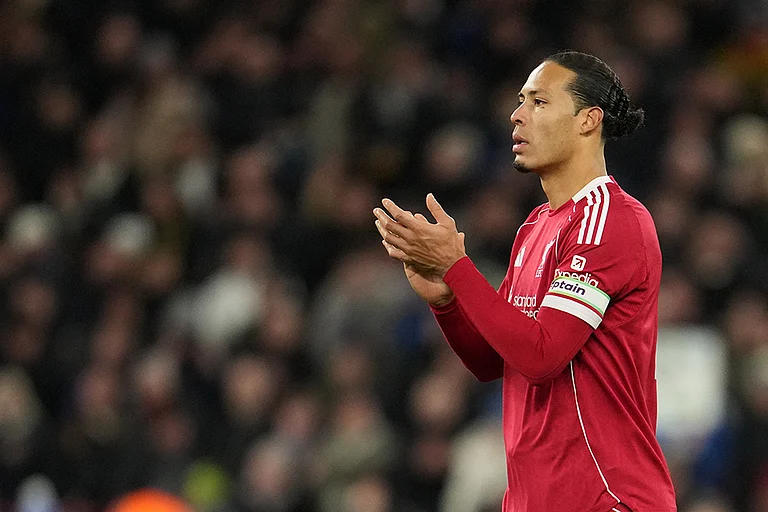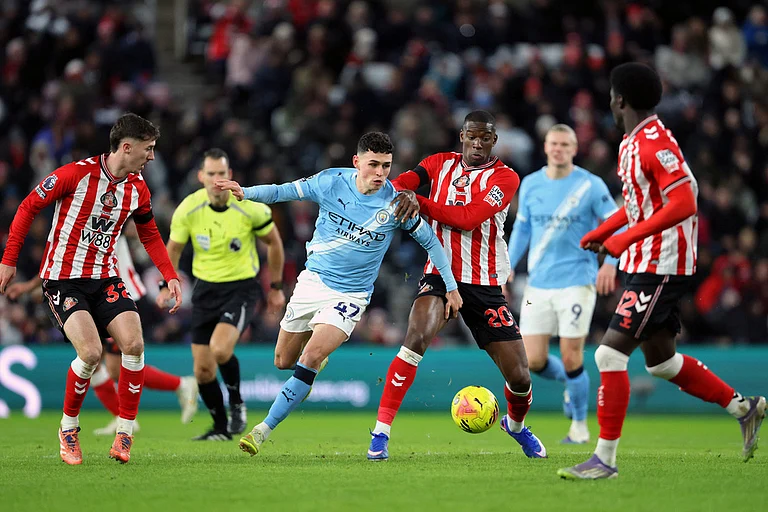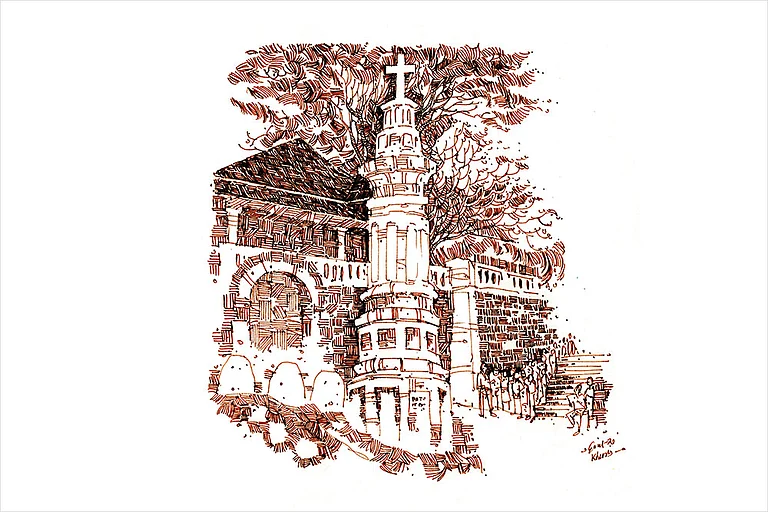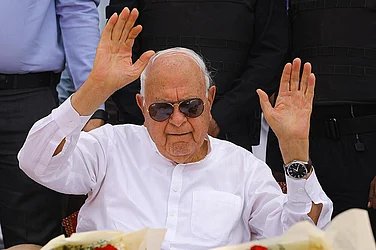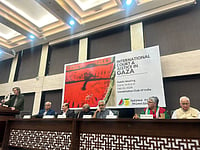September 21, 2013
Muzaffarnagar Riots
The Muzaffarnagar riots, which broke out in 2013, are considered the worst communal riots in the history of Uttar Pradesh. The initial riots broke out on September 21, 2013, after a girl from the Hindu Jat community was allegedly eve-teased by a Muslim youth from Kawal village. In retaliation, her brothers, Sachin Singh and Gaurav Singh, killed the youth, Shahnawaz Qureshi. In protest, the brothers were lynched by a Muslim mob while they tried to escape. The situation, which slowly took a religious overtone, led to violent clashes that spread across Muzaffarnagar and then extended beyond the district by September 27. However, there have been claims that the cause allegedly involved a bike accident between the youth and the brothers. The riots, which were heavily politicised, led to the killing of more than 60 people.
September 28, 2015
Dadri Lynching
52-year-old ironsmith, Mohammad Akhlaq, a resident of Bisahda village, near Dadri in Uttar Pradesh, and his 22-year-old son were brutally beaten on suspicion of cow slaughtering. While Akhlaq died on the spot, his son had to undergo serious medical treatment. A group of cow vigilantes entered Akhlaq’s house late evening on September 28, 2015, after a neighbour allegedly complained against the family of stealing and slaughtering a cow. However, reports later contradicted whether the meat was goat or beef. Following the lynching, protests broke out across parts of the country, with the arrested accused receiving immense support from right-wing leaders.

April 1, 2017
Pehlu Khan Lynching
On April 1, 2017, Pehlu Khan, a local dairy farmer from Jaisinghpur village in Haryana’s Nuh district, was lynched by a group of over 200 cow vigilantes in Behror, as he was returning from Jaipur after purchasing dairy cattle. Khan, along with six others including his son, was carrying cattle and calves to increase milk production ahead of Ramadan. But the group was stopped, assaulted, and beaten despite possessing all the required legal documents to transport cattle. Two days later, Khan succumbed to his injuries, while a legal battle started over his lynching. On the basis of the video of the lynching, which was recorded by the mob, the police arrested three out of the six people who were named in the FIR, filed by Khan and his family. However, after a long battle in the court, all the six accused were acquitted by a trial court in Alwar and the case was subsequently challenged in the Rajasthan High Court, where it is still pending.

2017, ongoing
Rohingya Crisis in India
Following the military crackdown in Myanmar in August 2017, hundreds of thousands of Rohingya Muslims hailing from the western Rakhine state of Myanmar escaped the country to seek asylum in other countries. Even though there are 21,591 Rohingya ‘refugees and asylum seekers’ in India, as of December 2022, according to the UNHCR, the Indian government does not recognise them as refugees. At present, there are nearly 40,000 Rohingyas residing in the country. Over the years, the government has been largely criticised for its biased treatment towards the Rohingyas and its efforts to deport them. The poor living conditions of the Rohingyas have been largely reported from across the country—no access to basic facilities like water and housing. Further, the introduction of the CAA bill has terrorised Rohingya Muslims and they live in constant fear of deportation.
April 17, 2019
Tabrez Ansari Lynching
Tabrez Ansari was beaten and lynched to death on April 17, 2019, in Jharkhand’s Dhatkidih, which is near his hometown, Kadamdih village. Ansari, who used to work in Pune, was visiting his home during Eid and on that day he was travelling back from Jamshedpur with his two friends on a bike. He was caught in Dhatkidih by a mob that accused him of bike theft, and then tied him to a tree. They brutally beat him, forced him to chant “Jai Shri Ram”, and recorded the entire episode. Later, Ansari was sent to prison, where his condition deteriorated and he was denied any medical treatment. Eventually, on June 27, he was admitted to a hospital where he was declared dead. The police have been largely criticised for their loose investigation. Although murder charges were dropped, a Jharkhand Court sentenced the 10 convicts to 10 years of imprisonment on July 3, 2023.
December 15, 2019
Jamia Millia Attack
The Delhi Police unleashed brutality on the students of Jamia Millia University on December 15, 2019, who were protesting against the CAA bill, which they said was anti-Muslim. Tension started brewing after protesting students clashed with the Delhi Police personnel during their protest march towards Parliament on December 13. Two days later, the students clashed with the police outside the campus, following which several police personnel barged inside the university and lathi-charged students, destroyed properties, threw tear gas shells and fired shots. Over 50 students were injured and were admitted to nearby hospitals. Visuals of the violence went viral, drawing strong criticism against the police action. One student lost his eye after he was attacked in the library. Activists largely believe that Jamia was attacked because Muslim students were protesting an anti-Muslim policy.

February 23, 2020
North-east Delhi Riots
On February 23, 2020, communal riots broke out between Hindus and Muslims in the northeast area of Delhi between pro-CAA and anti-CAA groups. In 2019, protests broke out in several parts of the country in response to the passage of the CAA Bill, which allowed fast-track citizenship to Hindu, Sikh, Parsi, Jain, Buddhist, and Christian immigrants, but not Muslims. To many, it seemed like an anti-Muslim agenda of the government and Muslims in large numbers protested across Delhi. One such sit-in protest was organised near the Jaffrabad metro station in Northeast Delhi, which blocked a stretch of the Seelampur-Jaffrabad-Maujpur road on February 22. The next day, BJP leader Kapil Mishra gave an “ultimatum” to clear the blockade and delivered a politically-charged speech that incited violence within a few hours. Stones were pelted, houses were damaged, and several Muslims were brutally killed. The riot that lasted over 10 days saw 53 deaths, of which two-thirds were reported to be Muslims.
October 26, 2020
Nikita Tomar Murder Case
20-year-old Nikita Tomar was shot by her stalker Tausif and his friend Rehman outside her college in Faridabad on October 26, 2020, when she was waiting for her brother to pick her up after college. Tomar was aspiring to join the Indian Army. Tausif, who was earlier accused of abducting her, wanted her to marry him and convert to Islam. When Tomar refused to do so over the years, Tausif ended up killing her. While the matter was taken to the court, several protests broke out in Haryana and Delhi, organised by right-wing political parties, who alleged a case of ‘love jihad’. Open calls were made for Muslim genocide and violence against the community. Although the court ruled out any mention of ‘love jihad’ while convicting the accused, Haryana ministers had pressed to enact anti-conversion laws in the state.
September 23, 2021
Assam Eviction Violence
An eviction drive in Dholpur of Sipajhar, Assam, on September 23, 2021, led to the death of two civilians with several, including nine police personnel, suffering injuries. Over, 1,000 Bengali-speaking Muslim families were evicted from their homes spread across 10,000 acres of government land with no proper rehabilitation. The families were termed “illegal encroachers” who claimed to have bought the land decades ago from the locals without any proper paperwork. However, horrific videos of the eviction drive showed a protester armed with a lathi being shot by a policeman, who was then jumped on and stomped on by a civilian. Reports also suggest that a mob of nearly 2,000 people allegedly attacked the policemen during the eviction drive, following which the security forces had to resort to firing.
October 27, 2021
Kashmiri Student Ordeal
Three Kashmiri students of Raja Balwant Singh Engineering Technical College in Agra were arrested on October 27, 2021, for celebrating Pakistan’s victory at the T20 World Cup. The trio, who were slapped with sedition and cyber terrorism charges, were suspended from college for a social media post that was termed as an “indiscipline act” and “anti-national”. Further, a group of activists led by a BJP youth-wing leader barged into the college campus without permission and accused the college administration of “sheltering traitors” and filed a complaint at the local police station. The next day, the students were heckled by a group of students who chanted slogans—“Pakistan Murdabad” and “Bharat Mata ki Jai”.
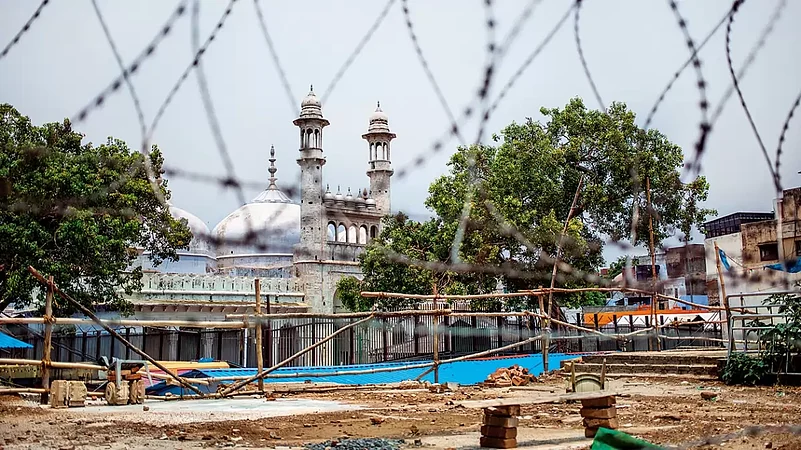
2021-ongoing
Gyanvapi Mosque Row
The Kashi Vishwanath Mandir-Gyanvapi Masjid case dates back to 1991, a year before the Babri Masjid demolition when a group of priests filed a plea in Varanasi seeking permission to worship inside the mosque. They claimed that the mosque was built by Mughal ruler Aurangzeb after demolishing a Hindu temple. However, the current controversy was ignited in 2021 when five Hindu women filed a plea to worship the Shringar Gauri, among other idols inside the premises. Following this, the Varanasi court in 2022 ordered a video survey of the mosque complex, which was challenged by the Muslims citing violation of the ‘1991 Places of Worship Act’ which allegedly led to the discovery of a ‘Shivling’ inside a well. However, following months of legal proceedings, the Supreme Court upheld the need for an ASI survey that resumed early this month.
January 1, 2022
Hijab Row
On January 1, 2022, six Muslim girls wearing hijab were denied entry to their classrooms at the Government PU College in Udupi, Karnataka. Agitated, the students protested the move by the college which soon snowballed into an issue around religious freedom. Students from other colleges across other states alleged a similar ban. Counter protests were carried out by Hindu men walking into colleges wearing saffron scarves. Several videos of the protests emerged, which showed students of the two communities engaging in verbal spats. The then BJP-led state government had to order the closure of educational institutions for several days to avoid violence. After a 11-day marathon court hearing, the Karnataka High Court upheld the Hijab ban citing it was not an “essential” religious practice. However, the ruling has drawn widespread criticism raising questions over its impact on the education of Muslim girls as well as an infringement of their fundamental rights.

2022, 2023
Ram Navami Riots
India has witnessed Ram Navami clashes as early as in the 1970s. This year and last year, the Hindu festival fell in the middle of the Muslim month of Ramadan. The cause of riots ostensibly starts when one community obstructs the procession of the other, or the other incites violence by carrying arms in the crowd. In 2022, Ram Navami fell on April 10, and around this time, shops were torched in parts of Gujarat where Ram Navami processions were taken out. In Delhi’s JNU, clashes broke out over vegetarian and non-vegetarian meals; Maharashtra’s Amravati witnessed violence between the Hindu and the Muslim communities; and, in West Bengal’s Shibpur area of Howrah, the situation went completely out of hand. Similar incidents were reported early this year, when Ram Navami fell on March 30. Violent communal clashes were reported in Gujarat’s Vadodara, Bengal’s Howrah, Bihar’s Nalanda, parts of Maharashtra and Haryana among others.
April 16, 2022
Hubballi Riots
On the evening of April 16, 2022, a mob of Muslim youth pelted stones at the Old Hubballi Police Station demanding stricter action against a Hindu youth, who had posted a politically-charged social media post, offending the community. The youth lived in Hubballi’s Anand Nagar area, where the population of the Muslim community is more. Acting on the complaint, although the police arrested the accused, according to the mob, the action was not stringent enough. The incident left around 12 policemen injured and at least 40 people got arrested. Section 144 of the CrPC was imposed to bring the situation under control. The outraged community also destroyed a nearby Hanuman temple, a hospital and damaged police vehicles. Hubballi, which has lately become a hub of communal clashes, has witnessed several such incidents over conflicts between the two communities.

May 2022
Nupur Sharma Prophet Muhammad Row
In May 2022, one of BJP’s former spokespersons, Nupur Sharma, courted a controversial row after she made certain ‘offensive’ remarks against Prophet Muhammad. The remarks were made during a news debate on a prime-time show about the ongoing Gyanvapi mosque. Sharma’s comment soon drew widespread criticism from the Muslim community, with the Gulf countries condemning India. Following her controversial remarks, protests broke out across parts of northern India. A Hindu tailor in Udaipur, who supported Sharma, was beheaded by two Muslim men in Udaipur. The Supreme Court in its ruling blamed Sharma for “igniting emotions across the country”. The head of the party’s Delhi media unit, Naveen Kumar Jindal, was also expelled for sharing a screenshot of her offensive comment in a tweet.
May 2022
Shraddha Walker Love Jihad
The nature of the murder of 27-year-old Shraddha Walker by her partner, Aftab Amin Poonawala, in Delhi in May 2022 shook the entire country after her body parts were recovered from the freezer inside an apartment. The murder created a massive hue and cry with protests breaking out across the country. While the matter was being investigated and debates started doing the rounds as to what makes a criminal mind (irrespective of religion), claims of a ‘love jihad’ were made by politicians, leaders, and even Shraddha’s father. Assam CM Himanta Biswa, Maharashtra’s Devendra Fadnavis, and many more pressed for anti-conversion laws and alleged a case of ‘love jihad’. The incident soon took the pernicious path of ‘love jihad’, ostracising Muslim men and calling for the safety of Hindu women.
February 14, 2023
Junaid-Naseer Lynching Case
Naseer and Junaid, who went missing from their home in Rajasthan’s Bharatpur village, on February 14, 2023, were later found charred to death inside a Bolero car in Barwas village, which falls under the Loharu police station area of Haryana’s Bhiwani district. The duo were allegedly attacked, brutally tortured, and later burnt to death by the gaurakshaks (cow vigilantes) affiliated with the Bajrang Dal. The incident came to light after visuals of their charred bodies went viral on social media. Before their bodies were set ablaze, the victims were allegedly taken to the Ferozepur-Jhirka police station in Haryana where the police refused to consider the case. The victims were then taken away by the mob that set them on fire. Further investigation revealed the alleged involvement of Bajrang Dal leader Monu Manesaw, who has also been accused of inciting violence with his speech in the recent communal clashes that broke out in Haryana’s Nuh.
July 31, 2023
RPF Constable Kills Muslim Passengers
On July 31, 2023, a Railway Police Force (RPF) constable, Chetan Singh, shot and killed four people onboard the Mumbai-bound 12956 Jaipur-Mumbai Superfast Express near the Palgarh Railway Station. The deceased were Muslim labourers. Several media reports cited other passengers, who alleged that Singh was heard taking Modi’s and Yogi’s names afterwards. In another recent report, a woman passenger reportedly said that Singh had forced her to chant ‘Jai Shri Ram’ in the train.
August 2023
Mughal Name Changes
Under the ruling BJP government, India has been on a name-changing spree, with the latest being Nehru Memorial Museum and Library being renamed the Prime Minister’s Museum and Library. Early this year, the Centre renamed the iconic Mughal Garden at the Rashtrapati Bhavan to ‘Amrit Udyan’ in line with the larger narrative of shedding every spec of alleged colonialism. Parallel to this instance, Delhi University’s Mughal Garden on the North Campus was renamed Gautam Buddha Centenary Garden. Among other examples are Faizabad to Ayodhya, Mughalsarai Junction to Pandit Deen Dayal Upadhyaya Junction, Feroz Shah Kotla Cricket Stadium to Arun Jaitley Stadium and so on. The Modi government has been widely criticised for selectively changing Islamic names to Hindu ones in an attempt to wipe away the Mughal history of India.
(This appeared in the print as 'Extreme Violence')







